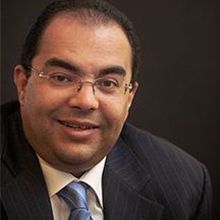In a nutshell
To convene all the financial stakeholders to fund efforts to reach the SDGs – including private sector finance, international and bilateral aid organisations, and businesses – countries should establish integrated national financing frameworks.
We should lighten poor nations’ crushing debt burdens with voluntary sovereign-debt buybacks. This could be managed by the IMF, which has noted that emerging and developing nations need an additional $2.5 trillion to deal with the pandemic.
We need to be ‘building back better‘ than before by aligning recovery policies with long-term benchmarks including the SDGs and the Paris Agreement, and laying the groundwork now for a resilient, sustainable and inclusive future.
Global economic leaders’ worst springtime prophecies have been proven true by autumn: Covid-19 is choking the world economy and compounding the suffering of our most vulnerable people. As the global death toll approaches one million, both the human and economic costs of the pandemic continue to worsen in the deepest recession since the Second World War, triggering the first increase in global poverty in a generation. Social distancing is causing a unique global supply shock, severely reducing investment in low-income nations, requiring vigorous and creative action.
As we look back nostalgically at earlier anaemic-but-positive growth projections, the International Monetary Fund (IMF) now predicts a global economic contraction in 2020 of nearly 5%. Working-hour losses for the second quarter of 2020 relative to the last quarter of 2019 are estimated to reach 14% worldwide, equivalent to 400 million jobs lost.
Trade in areas such as commodities, tourism, transport and distribution have been devastated by both health restrictions and capital outflows. Meanwhile, foreign direct investment (FDI) is forecast to fall by 40% in 2020 – bringing FDI below $1 trillion for the first time since 2005. Remittances, a valuable source of development income, are expected to fall by 20% by the end of this year.
Yet even during this unprecedented crisis, low- and middle-income countries will still be asked to pay a total of $130 billion in debt service this year. Dozens of nations have requested debt service relief. Many of these are in distress and face the possibility of default. Others may be forced to make devastating cuts in public services that are badly needed to bandage their wounded people and economies – just to service their debts.
Let us never forget that the world’s poor are suffering the most from the economic and health effects of Covid-19. Thus, a comprehensive and equitable response is required. More than 100 million additional people will be pushed into extreme poverty – some say nearly twice this amount – the first increase of global poverty since 1998. As a result of mass unemployment, disruption to food production supplies and declining aid, as many as 12,000 people per day could die from hunger by the end of the year, doubling the number of families that are food insecure, and creating new epicentres of hunger across the globe.
The hardship of people living in conflict zones will increase, particularly for women and children and other vulnerable populations. If history is our guide, their misery could create new conflicts unless we intervene effectively to prevent further human and economic losses.
Some say our hopes for achieving the Sustainable Development Goals (SDGs) may already be a fading dream, especially for the world’s poorest. Yet the SDGs have never been more important – and are still the best course to navigate through these perilous waters.
We previously outlined our case for the SDGs as a guide for the Covid-19 response, but now it is time to implement them – and with adequate financing.
So how should we proceed to finance and implement the SDGs during and after the pandemic? There are at least four key steps:
Countries must have the necessary funds to protect their people and economies
The combined global fiscal response to the crisis is now over $11 trillion. Many wealthy countries have enacted extraordinary fiscal spending measures that often exceed 10% of their GDP. Yet developing nations have insufficient fiscal space, limiting their ability to respond with large fiscal packages needed to save lives and livelihoods.
Low-income countries will need cash to maintain their investments in healthcare and safety nets. They also require funds to provide credit to protect small businesses, which employ most of their people. These nations should explicitly integrate the SDGs into their budgets, while maintaining good governance, and establishing fair tax and trade systems, which could also help unlock financing from the private sector.
To convene all the financial stakeholders to fund efforts to reach the SDGs – including private sector finance, international and bilateral aid organisations, and businesses—countries should establish integrated national financing frameworks (INFFs).
Multilateral development banks could also do more to collaborate on this agenda, each exploiting their comparative advantage, creating greater leverage and pooling financing as needed. Some may need to increase their capital base, and their shareholders will need to make this happen.
We shouldn’t pour water on drowning victims
Thus, we should lighten poor nations’ crushing debt burdens with voluntary sovereign-debt buybacks. This could be managed by the IMF, which has noted that emerging and developing nations need an additional $2.5 trillion to deal with the pandemic. The IMF could also issue new Special Drawing Rights (SDRs), and reallocate unused SDRs from advanced to developing economies to boost liquidity.
Some policy-makers have urged the IMF to modernise its debt restructuring to address today’s economic and environmental challenges, while others have argued for debt service suspension, involving all official bilateral and private sector creditors, along with greater transparency. Heads of state and ministers are meeting in September under United Nations (UN) auspices to recommend policy responses that will help sustain the recovery and reduce debt burdens.
While the World Bank implemented the Debt Service Suspension Initiative (DSSI), which allows 76 International Development Association (IDA) countries and Angola to suspend principal or interest payments on their debts to G-20 countries until the end of 2020, some have argued to free up additional resources for developing countries.
During a meeting with finance ministers on 8 September, many called for an extension of the DSSI until at least 2021, a broadening of its base to include middle-income countries and small island developing states, and greater participation of private sector creditors.
On the delivery side, we have to spend every dollar wisely
We need to be ‘building back better‘ than before by aligning recovery policies with long-term benchmarks including the SDGs and the Paris Agreement, and laying the groundwork now for a resilient, sustainable and inclusive future.
For example, UN Secretary-General António Guterres has advocated strengthening the capacities of local governments, while the World Bank has argued for enabling Africa to accelerate the transition to digital economies through innovative investments in infrastructure and human capital.
The Secretary-General has also called for the establishment of debt-for-climate and debt-for-SDG swaps to help release resources in developing countries. The UN Regional Economic Commission of Latin America and the Caribbean (ECLAC), for example, has proposed swapping Caribbean external debt for annual payments into a climate resilience fund, which can be a source of funding for investments for the crisis response and the SDGs.
We must plug the leaks
Supporting developing countries in the form of debt relief and boosting liquidity is not possible so long as major leakages exist in the system in the form of illicit financial flows. In Africa alone, $1 trillion is estimated to have been lost over the last 50 years – roughly equal to the amount of official development assistance received on the continent during the same period.
To combat illicit financial flows, we must implement procedures and frameworks that have already been agreed on – in theory. As emphasised by ministers of finance during the high-level meeting on 8 September, digital technologies could also be used to strengthen automatic exchanges of tax information, boost anti-money laundering systems, and combat tax evasion and illicit flows.
To pilot through this crisis, our community of nations has to work together – guided by the SDGs – to fund and implement measures to address both short- and long-term needs, particularly for the poorest.
This column was first published by Brookings – see the original version here.



